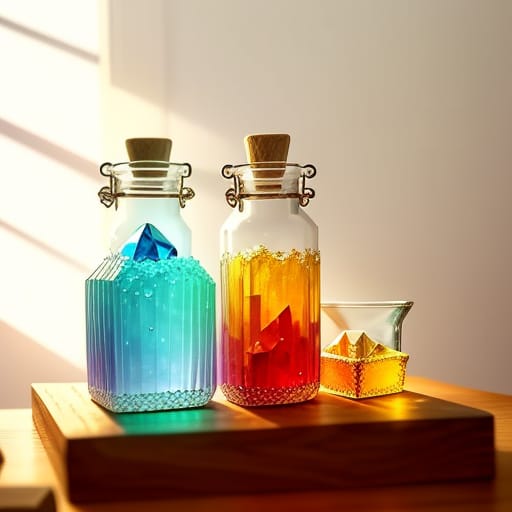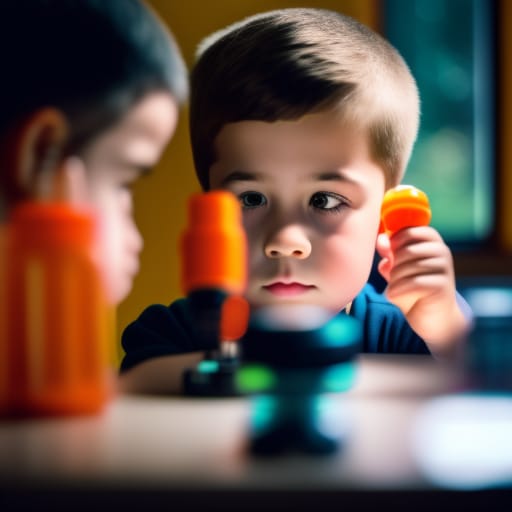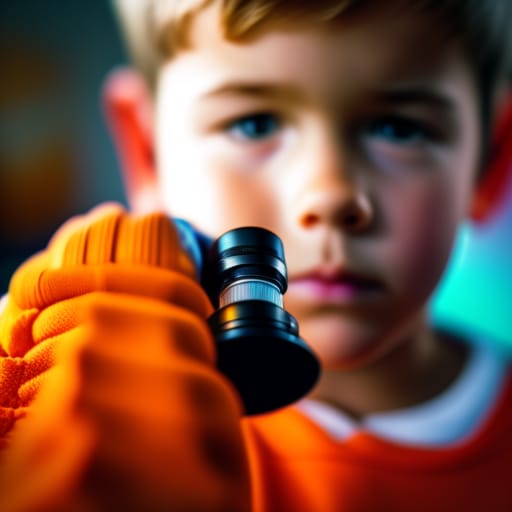Crystal growing is a fascinating science hobby that allows you to grow beautiful crystals in your own home. While many crystal growing kits come with basic supplies, you’ll often need some additional materials to really maximize your crystal growing experience. This guide will provide a comprehensive overview of all the extra supplies you may need while growing crystals, from chemicals to tools to storage containers. With the right additional gear, you’ll be growing gorgeous, high-quality crystals in no time!

An Introduction to Crystal Growing
Before diving into the additional supplies, let’s first go over some crystal growing basics.
Crystal growing involves producing synthetic crystal structures under controlled conditions. This is achieved by dissolving a crystalline solid in a liquid solvent to the point of saturation, then allowing crystals to slowly grow as the solution cools. The process mimics how crystals form in nature.
Crystals have perfectly ordered molecular structures that make them useful in science, technology, and even metaphysical healing. Growing your own crystals is an engaging way to learn about chemistry, physics, geology, and more. Plus, the crystals you grow can become beautiful additions to your home decor or make great gifts.
While basic crystal growing kits provide the fundamentals, supplemental supplies will allow you to customize and enhance your crystal growing experiments. This guide will explore the key supplementary items you may need. Let’s get started!
A Brief History of Crystal Growing
Before diving into additional supplies, it helps to understand a little history behind the practice of crystal growing:
- Ancient origins – Crystal growing likely originated thousands of years ago as people observed crystals forming in nature. Early civilizations may have simulated natural processes to produce crystals.
- Early modern developments – By the 17th century, scientists were exploring purer crystal growing methods involving solutions and controlled temperature changes.
- Major 19th century advancements – Crystallography advanced considerably in the 1800s as scientists like Jean-Baptiste Romé de l’Isle studied crystal structure.
- Modern crystallography – 20th century discoveries like X-ray diffraction enabled detailed analysis of crystal structures, with huge scientific implications.
- Modern hobbyist crystal growing – Crystal growing kits emerged in the 1900s, allowing hobbyists to easily grow crystals at home for fun and education.
Understanding this long history of crystal growing gives deeper appreciation for supplementary equipment that enables custom crystal creation. Next let’s look at the types of crystals you can grow.
Common Types of Crystals
There are many different types of crystalline structures, which have an impact on supplies needed:
Natural vs Synthetic Crystals
- Natural crystals form unaided in nature over long periods.
- Synthetic crystals are artificially grown in controlled lab conditions.
Growing synthetic crystals requires additional equipment to form the necessary stable environment.
Organic vs Inorganic Crystals
- Organic crystals contain carbon and originate from living things or their byproducts. Examples include citric acid and sucrose.
- Inorganic crystals lack carbon and come from mineral sources. Common examples include table salt and borax.
Organic and inorganic crystals require different solvents and growth methods based on their chemical properties.
Common Crystals for Beginners
Some of the most common and easy crystals for beginners to grow with basic kits include:
- Table salt (inorganic)
- Alum (inorganic)
- Epsom salts (inorganic)
- Citric acid (organic)
- Sugar / sucrose (organic)
The additional supplies you’ll need depend largely on which types of crystals you want to grow. Let’s look at some important techniques next.

Crystal Growing Techniques
There are a few basic methods used in crystal growing:
- Solution Crystallization: Crystalline solute is dissolved in hot solvent, allowed to cool and crystallize.
- Melt Crystallization: Crystalline substance is melted then cooled to form crystals.
- Vapor Crystallization: Gas crystallizes on a surface as it cools and condenses.
The most common technique for beginners is solution crystallization, which involves careful heating, cooling, and evaporation control using basic lab equipment.
Advantages of solution crystallization:
- Simply involves dissolving and cooling a solution.
- Allows formation of large, nicely shaped crystals.
- Wide range of soluble crystals can be grown.
Now let’s explore the types of additional equipment used in crystal growing.
Essential Crystal Growing Lab Equipment
Growing quality crystals requires stable conditions and specialty supplies to see optimal results. Here are some common items needed:
Crystal Growth Solutions
- Solvents – Liquids used to dissolve crystalline solids, like water or alcohol.
- Solutes – The crystalline material you are dissolving to grow crystals, like salt.
- Chemical additives – Substances that speed up or improve crystal formation.
Glassware
- Beakers – Used to mix crystal solutions.
- Test tubes – Small tubes used to suspend strings in solution.
- Glass jars – Larger vessels used for slow evaporation.
- Erlenmeyer flasks – Enable mixing and controlled cooling.
Tools
- Thermometers – Monitor solution temperature.
- Stirring rods – Mix solutions.
- Tweezers – Handling seed crystals or harvested crystals.
- Mesh screens – Suspend crystals in solution.
- Pipettes – Transfer small solution amounts.
Controlled Conditions
- Heating devices – Heat plates or ovens to dissolve solutes.
- Refrigeration – Controlled cooling to promote crystallization.
- Covers – Prevent evaporation for slow crystal growth.
This scientific equipment enables optimal crystal growth and precise control over variables. Next we’ll look at crystal growing kits.
Helpful Crystal Growing Kits

For beginners, crystal growing kits provide an easy introduction with all the basic supplies needed. Here are some top options:
Science Kits
These provide full educational lab setups to grow multiple crystal types:
- Home Science Tools Crystal Growing Lab Kit – $35. Includes 3 solutions, beaker, pipette, and jar.
- Melissa & Doug Crystal Growing Lab – $25. Grow 6 crystal types with this kids’ starter set.
- Thames & Kosmos Crystal Growing Experiment Kit – $45. Features 15 experiments growing 7 crystal types.
{{< image src=”images/crystal-growing-kit.jpg” alt=”Crystal growing lab kit with vials and beaker” caption=”A crystal growing starter kit is a great option for beginners looking to grow their first crystals.” width=”400″ >}}
Single Crystal Kits
Focus on mastering one crystal type:
- Molecular World Alum Crystals Kit – $18. Grow huge alum crystals easily.
- Creativity for Kids Grow ‘n’ Glow Terrarium – $15. Grow light-up crystal trees in a mini terrarium.
- 4M Crystal Growing Kit – $14. Kids can grow colorful salt crystals in a light-up display.
Advanced & Specialty Kits
Take your crystal growing to the next level:
- Home Microbiology Crystal DIY Kit – $70. Grow 10 exotic crystalline structures.
- Flinn Scientific Crystal Optics Lab Kit – $26. Investigate optical properties of crystals.
- Ward’s Science Crystallography Lab Kit – $107. Advanced kit covers crystal lattice structures.
The right crystal growing kit provides all the fundamentals to start growing beautiful crystals with ease.
Recommended Additional Chemicals
While kits include basic chemicals, you can buy additional chemicals for further crystal growing projects:
| Chemical | Description | Typical Price |
|---|---|---|
| Sodium thiosulfate | Grows striking cubic crystals | $10 for 100g |
| Potassium nitrate | Makes long, needle-shaped crystals | $15 for 500g |
| Sodium acetate | Forms glassy, solid crystals | $25 for 1kg |
| Ammonium dichromate | Orange crystals with volcanic shapes | $30 for 500g |
| Copper sulfate | Deep blue crystals | $15 for 250g |
When buying chemicals, be sure to get lab grade purity for best results. Always follow safety precautions.
Some kits also include additives like sugar or bleach to modify crystal growth, so experiment!
Recommended Additional Equipment
To upgrade from basic kits, here are some suggested supplemental equipment purchases:
- Digital kitchen food scale – $13. Accurately measure chemicals.
- Laboratory thermometer – $5. Precisely monitor temperature.
- Crystal growing vials – $7 for 25. Custom containers to grow crystals.
- Nylon suspension string – $8. Hang crystals in solutions.
- Tweezers and spatula set – $6. Retrieve delicate crystals.
- Mesh growth platforms – $3. Support fragile crystal structures.
- Plastic graduated cylinders – $15. Accurately measure liquid volumes.
- Digital kitchen timer – $10. Time crystal growth periods.
- Glass stirring rods – $8 for 5. Effectively mix solutions.
- Latex gloves – $7. Protect hands from chemicals.
DIY Crystal Growing Storage Solutions
Once you start growing multiple crystal types, you need organized storage. Some DIY solutions:
- Repurpose plastic containers – yogurt tubs, jars, etc work great. Label each clearly.
- Craft storage cases – Buy a compartmentalized bead or tackle box.
- Display shelves – Show off your creations on bookcases or floating shelves.
- DIY rack from bottle caps – Hot glue caps to wood strips to hold vials.
{{< image src=”images/crystal-storage.jpg” alt=”Crystal vials organized in repurposed storage containers” caption=”Repurposed and DIY storage solutions help keep your crystal collection organized.” width=”500″>}}
Proper storage helps preserve crystals and enables you to catalog your collection.
FAQs About Additional Crystal Growing Supplies
What are the most essential supplies for crystal growing?
At minimum, you need a crystallization solution, a clear glass container, and a location for stable, undisturbed growth. Temperature and evaporation control improve crystal quality.
What household items can substitute for lab equipment?
Items like mason jars, drinking glasses, plastic containers, coffee filters, and a thermometer can function in place of scientific lab gear for basic crystal growing.
Where is the best place to buy additional chemicals and tools?
Specialty online science retailers offer the best selection and prices on crystal growing lab equipment. Amazon also carries many supplies.
Is it safe to grow crystals around children and pets?
Take precautions like wearing gloves, avoiding ingestion, and keeping animals away from chemicals. But under supervision, crystal growing can be educational and safe.
Inspiring Ideas for Using Your Crystal Collection
Once you’ve expanded your crystal growing capabilities, here are some creative ways to use your crystalline creations:
- Craft jewelry, keychains, bookends and more.
- Make etched crystal candle holders or vases.
- Give crystals as scientific gifts or classroom prizes.
- Use crystals to enhance meditation or spiritual practices.
- Create DIY crystal night lights or color changing displays.
- Design a glowing geode diorama or crystal garden.
- Make your own crystal-themed artworks and photos.
The possibilities are endless when you have a spectrum of crystal specimens on hand!
Grow Your Knowledge
We’ve only scratched the surface of crystal growing supplies in this guide. To dive deeper:
- Read in-depth crystal growing books and publications.
- Watch educational YouTube videos on techniques.
- Join crystal growing communities to exchange ideas.
- Take a crystallography course at a local science center.
- Consider buying an advanced kit once you master the basics.
The science of crystallography has endless opportunities to learn. Growing crystals is equally rewarding as both an educational hobby and decorative craft.
With the additional supplies covered in this guide, you have all the knowledge you need to get started growing stunning crystalline structures at home. Just remember to have fun exploring this mesmerizing science!
FAQs About Additional Crystal Growing Supplies
What are the most essential supplies for crystal growing?
At minimum, you need a crystallization solution, a clear glass container, and a location for stable, undisturbed growth. Temperature and evaporation control improve crystal quality.
What household items can substitute for lab equipment?
Items like mason jars, drinking glasses, plastic containers, coffee filters, and a thermometer can function in place of scientific lab gear for basic crystal growing.
Where is the best place to buy additional chemicals and tools?
Specialty online science retailers offer the best selection and prices on crystal growing lab equipment. Amazon also carries many supplies.
Is it safe to grow crystals around children and pets?
Take precautions like wearing gloves, avoiding ingestion, and keeping animals away from chemicals. But under supervision, crystal growing can be educational and safe.
How can I display my crystal collection attractively?
Creative display ideas include glass shelves with LED lights, DIY wood and wire stands, geode-style boxes, and hanging prisms in windows. Proper lighting creates a stunning crystal showcase.